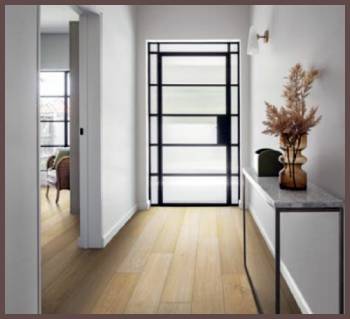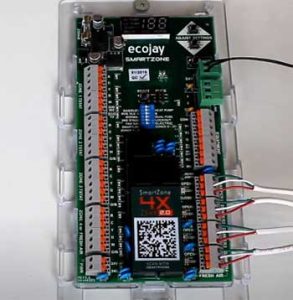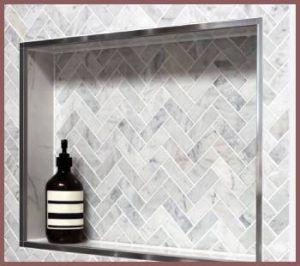Luxury vinyl plank (LVP) flooring has quickly risen to become one of the most popular flooring options on the market. With its durability, affordability, and stylish appearance, it’s no wonder homeowners are gravitating towards LVP.
One of the top brands in the LVP world is Karastan, and in this article, we’ll dive into Karastan LVP reviews and explore the pros and cons of this popular flooring option.
A Look at Karastan LVP: The Good, the Bad, and the Beautiful
The Pros: What Makes Karastan LVP Stand Out

- Durability
One of the most significant selling points of Karastan LVP is its durability. This flooring is designed to withstand heavy foot traffic, making it an excellent choice for families with children and pets. It’s resistant to scratches, dents, and stains, ensuring your floors will maintain their attractive appearance for years to come.
- Waterproof Capabilities
Karastan LVP is 100% waterproof, making it perfect for areas where moisture might be an issue, such as bathrooms, kitchens, and basements. This means you can enjoy the luxurious look of hardwood or stone flooring without worrying about water damage.
- Design Options
With Karastan LVP, you have a wide range of design options to choose from. This flooring comes in various styles, colors, and textures, so you can easily find the perfect look for your home. Whether you prefer the classic look of hardwood or the modern appeal of stone, Karastan has you covered.
- Easy Installation
Karastan LVP is designed for easy installation, making it an excellent choice for DIY enthusiasts. Most Karastan LVP products feature a click-lock system, which allows the planks to fit together seamlessly without the need for glue or nails. This not only saves time and effort but also helps reduce the overall cost of your flooring project.
- Affordability
Compared to other flooring options like hardwood or stone, Karastan LVP is a more affordable choice. You can achieve the same high-end look without breaking the bank. Plus, with its durability and low maintenance requirements, you’ll save money in the long run on repairs and replacements.
The Cons: Potential Drawbacks of Karastan LVP

- Limited Resale Value
While LVP flooring is undoubtedly popular, it may not have the same resale value as traditional hardwood or stone flooring. If you plan on selling your home in the future, this is something to consider.
- Can Be Less Comfortable
Some homeowners find that LVP is not as comfortable underfoot as other flooring options, such as carpet or hardwood. While Karastan LVP is designed to be more comfortable than cheaper alternatives, it may still lack the warmth and softness that some people prefer.
- Susceptible to Fading
While Karastan LVP is resistant to scratches and dents, it can be susceptible to fading over time, especially when exposed to direct sunlight. If you have large windows or skylights, you may need to take precautions to protect your flooring from UV damage.
Frequently Asked Questions (FAQs)
The best quality LVP is typically determined by its wear layer thickness, overall thickness, and the quality of the materials used. Karastan LVP is considered one of the best quality options due to its durability, design options, and waterproof capabilities.
High-quality LVP is typically characterized by a thick wear layer (20 mil or higher), overall thickness (5.5 mm or greater), and the use of premium materials. Additionally, reputable brands like Karastan often offer extensive warranties, which can be an indicator of the quality and durability of their products.
LVP can be an excellent investment for homeowners, especially if you’re looking for a durable, low-maintenance, and stylish flooring option. While it may not have the same resale value as hardwood or stone flooring, LVP is more affordable and can still provide a luxurious look for your home.
LVT (luxury vinyl tile) and LVP (luxury vinyl plank) are both excellent flooring options, but the choice ultimately depends on your specific needs and preferences. LVT is designed to replicate the look of ceramic or stone tiles, while LVP mimics the appearance of hardwood planks. Both are durable, waterproof, and low-maintenance, but LVP tends to be more popular among homeowners due to its wider range of design options and easier installation process.
The ideal thickness for LVP depends on your specific needs and the area where it will be installed. Generally, a thicker LVP (5.5 mm or greater) will provide better comfort, durability, and sound absorption. A thicker wear layer (20 mil or higher) is also essential for increased protection against scratches, dents, and stains.
Yes, high-quality LVP like Karastan is 100% waterproof. This makes it an excellent choice for areas prone to moisture, such as bathrooms, kitchens, and basements. Keep in mind that while the LVP itself is waterproof, any damage caused by excessive moisture or flooding may still affect the subfloor or surrounding structures.
The Bottom Line: Is Karastan LVP Right for You?
Now that we’ve explored the pros and cons of Karastan LVP, it’s time to decide if it’s the right flooring choice for your home. If you’re looking for a durable, stylish, and low-maintenance flooring option that can withstand moisture, Karastan LVP is an excellent choice. However, if resale value or underfoot comfort is a top priority, you may want to consider other options like hardwood or carpet.
Ultimately, the decision comes down to your specific needs, preferences, and budget. By weighing the pros and cons presented in this article and considering your own priorities, you’ll be well-equipped to make an informed choice that will keep your home looking beautiful for years to come.




